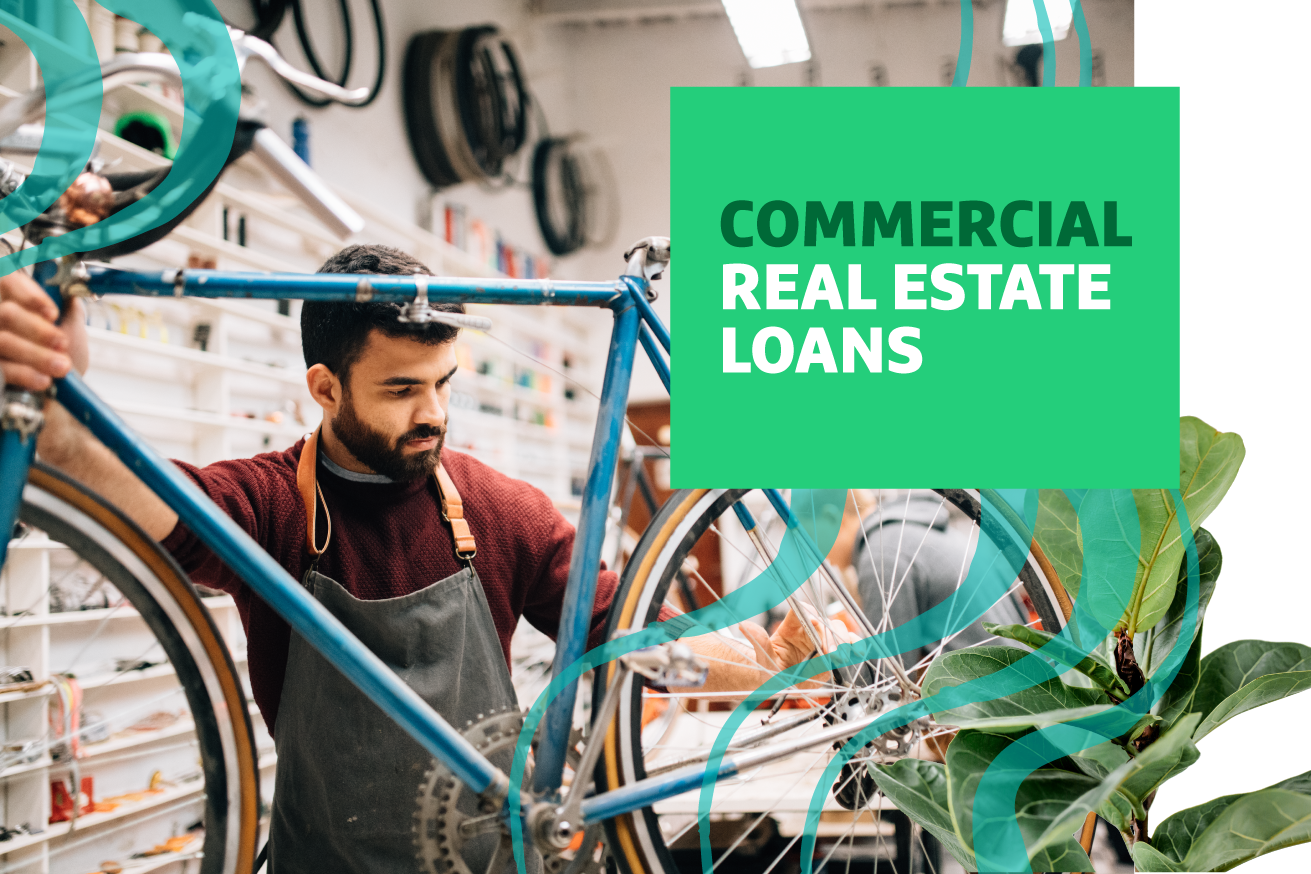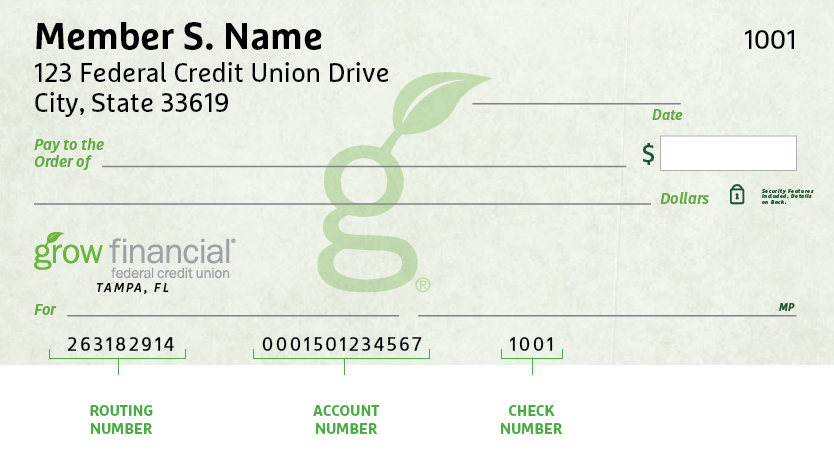- Personal
- Membership
- Membership
- Rates & Fees
- Checking
- Checking
- Personal Loans
- Personal Loans
- Wealth Management
- Investment Services
- Financial Advisors
- Resource Center
- Business

May 18, 2022
Commercial Real Estate: Owner-Occupied Loans vs. Investment Loans
Are you a small business owner considering a commercial real estate loan? There are a few key terms and facts you’ll want to know before you get started. We talked with Justin Northcutt, Commercial Loan Officer, to find out more about the two types of commercial real estate loans — owner-occupied and investment. He also talked about the SBA loan program, risk, down payments, and variables between lenders. Let’s look at the types of loans that business owners can use to buy property.
Owner-Occupied vs. Investment
In the lending world, there are two classifications for commercial real estate loans: owner-occupied and investment (otherwise referred to as non-owner-occupied). Which type of loan you’ll need comes down to one primary question: who will be occupying the property?
The answer tells us where the repayment of the loan will be coming from, whether that be revenue generated by your own business operating out of the space or via rental income from a third party leasing the space.
Owner-occupied: Are you purchasing a property for your own business to operate from? Then you can get an owner-occupied loan, as long as your business occupies at least 51% of the space on the property. (That means you can still rent out some of the property to tenants, if you want, just not more than half of the space.) Owner-occupied loans:
- Typically come with the best rates and terms because they’re seen as less risky by lenders.
- Have a lower down payment, which means less upfront cash in the deal on the part of the business owner.
- Are available as traditional loans directly through a lender or as SBA loans under the SBA 504 program. (For more details, read about the SBA 504 Loan.)
Investment: Are you looking for an investment property that you’ll rent out to third-party tenants? Then you’ll need an investment loan (non-owner-occupied loan). Investment loans:
- Allow business owners to diversify their investment portfolio.
- Provide the potential for rental income.
- Open the door to many possibilities in terms of property type and use, from retail to industrial to office.
Commercial Real Estate FAQs
What is risk-based pricing?
When making lending decisions, most lenders use something called risk-based pricing. Essentially, this involves evaluating the potential risk of loss associated with any given deal and determining terms based on that risk. Each situation is different and will be evaluated based on your credit history and other factors.How much of a down payment will I need?
For owner-occupied loans, a down payment of 15-20% is typical. On investment loans (non-owner-occupied loans), borrowers will usually put 25-30% down.What are the variables between lenders?
When you’re evaluating different lenders and loan options, think about these variables:- Rates: This is going to be the first thing most borrowers think about and for a good reason. The interest rate can have a big impact on the total cost of the loan and can vary widely between lenders.
- Monthly payment: The amount you’ll pay each month is affected by the amortization schedule, which is the length of time you have to pay back the loan, and the rate.
- Fees: Some of the common fees lenders may charge are loan origination fees, appraisal and survey fees, and potentially prepayment fees. At Grow, we work to keep fees as low as possible and don’t charge some of the fees that other lenders do, including Intangible Tax, which can save you hundreds to thousands of dollars, depending on the size of your loan.
Need a commercial real estate loan?
Whether you’re ready to purchase your first store location, grow into a new location or add an investment property to your portfolio, we’ve got options for you. Our team of local Commercial Loan Officers understands the needs of small business owners and can help you navigate financing for your business.
To hear Justin explain these topics, watch our video interview.
Subject to credit approval.
Posted In:
How to Find Your Routing & Account Numbers
When you make a payment online, by phone or on a mobile device, you may be asked for our routing number and your checking account number. Credit unions and banks use these numbers to identify accounts and make sure money gets where it’s supposed to be. You’ll also need to provide your routing and checking account numbers for:
- Direct deposits
- Electronic checks
- Military allotments
- Wire transfers
Where to Find Your Routing & Checking Account Numbers
Your personal checks include both our routing number and your account number, as shown on the Grow check example below.

Don’t have a Grow check? No worries.
Visit any Grow store and ask for a Direct Deposit Form. It lists both your routing number and checking account number.
Making a Loan Payment
Incorrect Phone Number Alert
We’ve identified an incorrect phone number listed in a letter sent to a select group of new members with auto loans. The incorrect number is NOT affiliated with Grow. Please be sure to use our official phone number, 800.839.6328, which you can verify on our Contact Information page. For your security, keep your personal information safe and avoid sharing it over the phone, email or text message. We will never ask you for your credit or debit card security code, expiration date or PIN, login security codes, or your online banking password.
When it comes to making payments, we try to make it as painless as possible to pay your loan every month. We have several different ways to pay, including convenient online options.
Pay Online
You have two ways to pay online by transferring funds from another bank or credit union.
- Grow Online Banking (Preferred payment method for any loan)
This is the simplest way to pay your loan. You can make one-time payments or set up automatic recurring payments in Grow Online Banking. Once you log in, select “Transfer/Payments” from the menu. If you’re not enrolled in Grow Online Banking yet, you can set up your account in just a few minutes.
Log In
- Debit Card or ACH (Available for auto, personal loans and HELOCs)
Note: ACH and debit card payments are not available for credit cards or most mortgages, except HELOCs.
We accept ACH payments with no additional fees, consumer Mastercard® and Visa® debit cards with a convenience fee of $4.95, or commercial Mastercard® and Visa® debit cards with a convenience fee of 2.95% of the payment amount. To get started with an online ACH or debit card payment, select Pay Now below.
Pay Now
Pay by Mail
You can also pay any Grow loan by check through the mail. Please remember to include your account number and Grow loan number on the check. (For credit card payments, please do not write your 16-digit credit card number on the check, which can cause a delay in processing the payment.)
Address for auto, credit card, personal loan and HELOC payments:
Grow Financial Federal Credit Union
P.O. Box 75466
Chicago, IL 60675-5466Address for personal first or second mortgages and home equity payments:
Grow Financial Federal Credit Union
P.O. Box 11733
Newark, NJ 07101-4733You Are About To Leave GrowFinancial.org
At certain places on this site, there are links to other websites. Grow Financial Federal Credit Union does not endorse, approve, represent, certify or control those external sites. The credit union does not guarantee the accuracy, completeness, efficacy, timeliness or accurate sequencing of the information contained on them. You will not be represented by Grow Financial Federal Credit Union if you enter into a transaction. Privacy and security policies may differ from those practiced by the credit union. Click CONTINUE if you wish to proceed.
